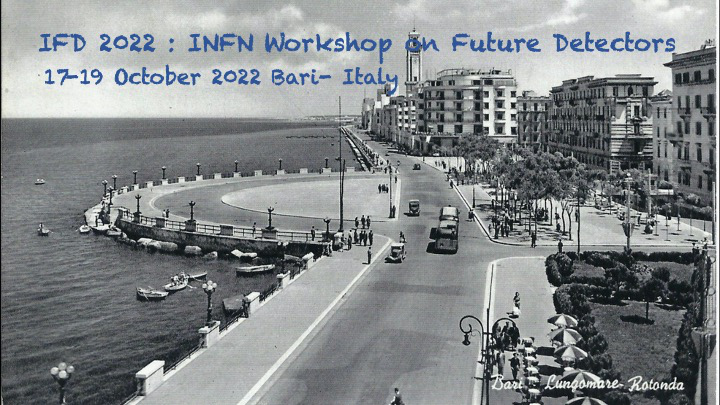Conveners
Gas Detectors: Gas Detectors
- Paolo Iengo (CERN)
- Davide Pinci (Istituto Nazionale di Fisica Nucleare)
- Davide Boscherini (Istituto Nazionale di Fisica Nucleare)
The present generation of Micro-Pattern Gaseous Detectors (MPGDs) are radiation hard detectors,capable of dealing with rates of several MHz/cm2, while exhibiting good spatial resolution (≤ 50 μm) and modest time resolution of 5–10 ns, which satisfies the current generation of experiments (High Luminosity LHC upgrades) but is not sufficient for Future Collider detectors. The application of thin...
The developments of next-generation Micromegas detectors with new resistive structures and fine granularity pad readout comply with the ECFA detector R&D themes on gaseous detectors for particle tracking at rates up to O(10) MHz/cm$^{2}$ with a spatial resolution of O(100) $\mu$m.
The talk focuses on test of detectors with uniform or segmented resistive planes with results on rate...
Picosec is a novel micropattern gaseous detector (MPGD) proposed by the RD51
collaboration to overcome the limitations of classical MPGDs in terms of timing
performance. The concept is based on detecting Cherenkov light emitted by an
impinging particle in a proper radiator. A photocathode converts such light into
electrons, and a double amplification stage MicroMegas detector detects them....
Different materials have been studied and proposed for the realization of RPC detectors for high rate environments. This study demonstrates how the semi-insulating gallium arsenide wafers currently on the market represent an optimal solution for high-rate RPCs. The measurements carried out show an intrinsic rate capability higher than 40 $kHz / cm^ 2$ with a gamma rejection of about $10 ^ {-3}$.
The use of resistive layers, primarily introduced in MPGD to improve spatial resolution via charge dispersion, has been one of the major trends in the recent years thanks to their spark amplitude quenching feature.
Among resistive-MPGDs the micro-RWELL, exhibiting excellent tracking performance (<100 μm) and good time resolution (5 ns) at very high particle rate (up to 20 MHz/cm2), is a...
The Resistive Cylindrical Chamber, is a new device consisting of two coaxial electrodes of resistive material with a cylindrical geometry. The principle underlying the operation of the device consists in the natural extension from the concept of planar field to that of quasi-planar field, whose gradient is defined by the cylindrical electrodes radii and by the gas gap thickness. This new...
La possibilità di studiare eventi a bassa energia prodotti da particelle debolmente interagenti sta diventando cruciale in molti aspetti della fisica astroparticellare, dalla ricerca di possibili candidati alla Materia Oscura alla spettroscopia dei neutrini solari.
La collaborazione CYGNO sta sviluppando una TPC gassosa, operante a pressione atmosferica e temperatura ambiente, con GEM a...

